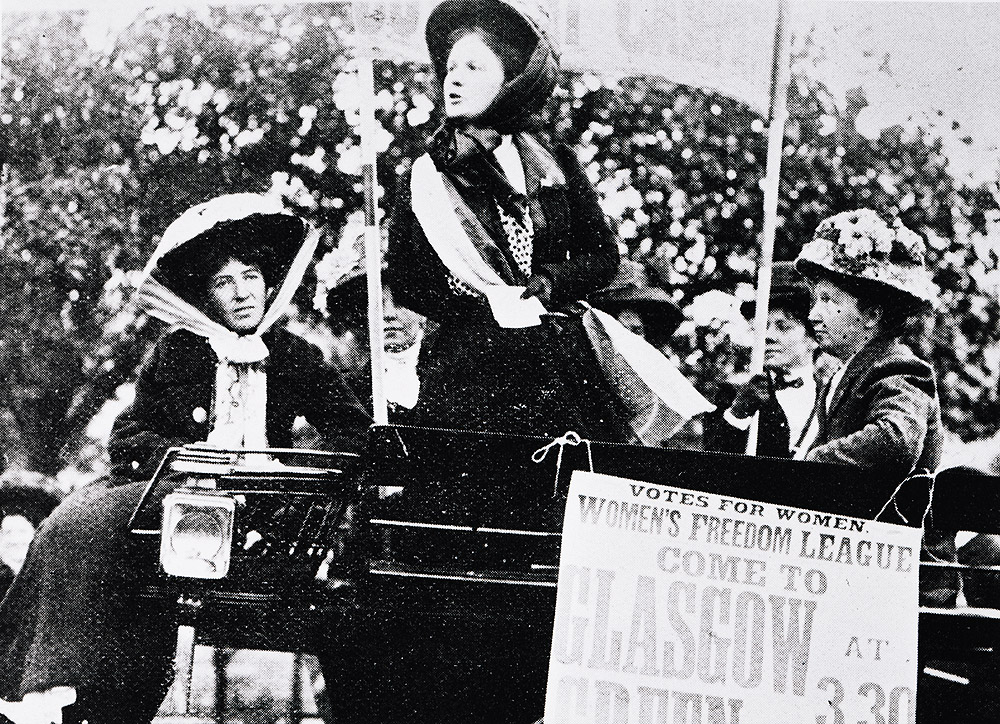DOWNLOAD – WHS Suffrage Scotland – Appendix I – timeline
Listed below are the key stages in the enfranchisement of women at municipal and parliamentary level. The Reform Acts/Representation of the People Acts listed often made provisions other than extension of the franchise, such as the redistribution of seats, creation of university seats and so on. Only the main provisions concerning the extension of the franchise are outlined here. It should be noted that it was usually the case that separate legislation had to be enacted for Scotland, and the relevant Acts were not necessarily passed for England and Wales and Scotland in the same year. The system of local government in Scotland also differed from that in England and Wales, and therefore the extension of the municipal franchise to women did not occur simultaneously in England and Wales and Scotland, although the process was a broadly parallel one.
1867 Reform Act – England and Wales. The borough franchise was extended to all male householders as long as they were not in receipt of poor relief and met registration requirements. Lodgers occupying lodgings worth £10 were also enfranchised. The property qualification for the county franchise was reduced.
There was an unsuccessful attempt by John Stuart Mill to amend the 1867 Reform Act to include women under the definition of ‘person’.
1868 Reform Act – Scotland. The burgh vote was extended to householders not in receipt of poor relief, and to lodgers in lodgings valued at least £10. The county franchise qualification threshold was also lowered.
In 1867 Mill and his stepdaughter Helen Taylor had set up a provisional women’s franchise committee (later the London National Society for Women’s Suffrage), and the Edinburgh National Society for Women’s Suffrage was also founded the same year.
1872 Women in Scotland given right to vote and stand for school boards. Eligibility was based on the Valuation roll and included only those who were owners or occupiers of lands or houses at £4 annual value.
1881/1882 Women ratepayers in Scotland given the right to vote in burgh [town councils and police burghs] elections.
1884 Reform Act – Extended the the householder voting rights enjoyed in Parliamentary boroughs [England and Wales] and burghs [Scotland] to counties. An attempt to amend the Act to extend franchise to women was rejected. One of the impacts of the enfranchisement of a substantial number of working-class men was the shift towards a new form of party organisation. New structures recruited both working-class men and women of both middle- and working-class backgrounds, with women increasingly taking part in party political activities from the 1890s onwards.
1889 Women ratepayers in Scotland given right to vote for county councils.
1894 Women in Scotland, where qualified for registration on county council and municipal registers, given right to vote and stand for parish councils.
1907 Women eligible to stand for town and county councils. Lavinia Malcolm elected as first woman town councillor in Scotland.
1908 Chrystal Macmillan argued the case for Scottish women graduates to be enfranchised. Rejected by Court of Session and House of Lords.
1913 Lavinia Malcolm elected as first woman provost of town council – in Dollar, Clackmannanshire.
1918 Representation of the People Act introduced: universal male suffrage – all men over the age of 21 eligible to vote; partial enfranchisement of women – women over 30 could register for the Parliamentary franchise if they, or their husband in the case of married women, qualified for a local government franchise. Women over 21 were also given the local government franchise. University Parliamentary franchise granted to all male graduates who were of age and were graduates of one of the universities forming university constituencies.
1918 Parliament Act 1918 – allowed women to stand for Parliament.
1919 General Election. Eunice Murray stands unsuccessfully as independent candidate in Glasgow (Bridgeton) – Scotland’s first woman Parliamentary candidate.
1923 Katharine, Duchess of Atholl elected as Unionist MP for Kinross and West Perthshire – the first woman to represent a Scottish constituency in Parliament.
1928 Representation of the People Act, 1928 – women given the vote on same terms as men.
Women’s History Scotland exists to promote study and research in women’s and gender history, particularly for those working in Scotland or working on Scottish themes. It has a commitment to history at all levels and aims to provide a network of information and support to all. Browse our website for news of activities and projects concerning women’s and gender history in Scotland.
Esther Breitenbach

This work is licensed under a Creative Commons Attribution-NonCommercial-ShareAlike 4.0 International License.
Some material on this website is not being made available under the terms of this licence.
These are:
Third-Party materials that are being used under fair use or with permission (photography owned by archives, blog contributors or from WikiMedia Commons). The respective copyright/Creative Commons licence details for use of third-party material should be consulted.

